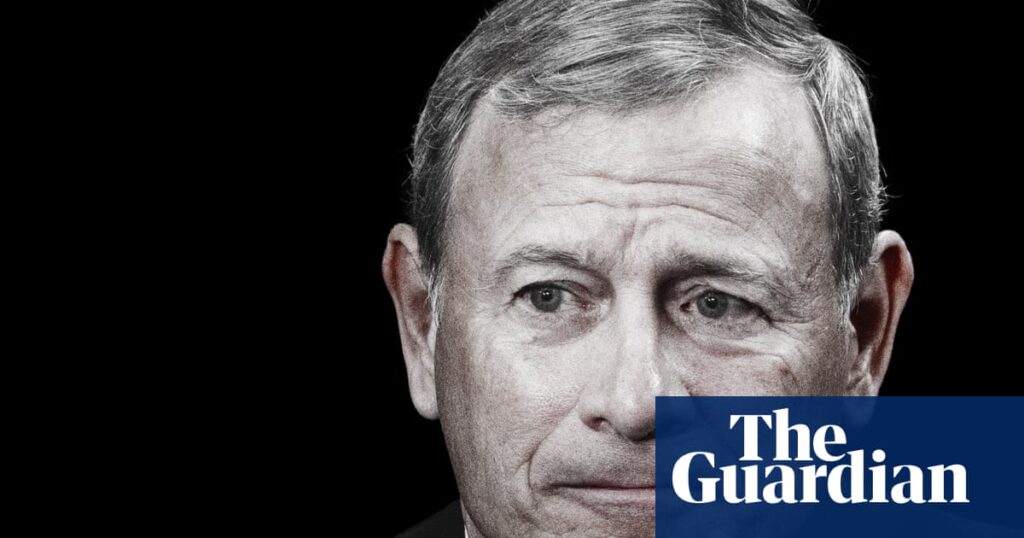
On March 4, Donald Trump delivered a historic 100-minute speech to Congress, marking the longest presidential address in U.S. history. As he concluded, Trump proceeded to greet the Supreme Court justices, eventually stopping before Chief Justice John Roberts. “Thank you again, thank you again,” Trump expressed, shaking Roberts’s hand with notable enthusiasm. As he stepped away, Trump tapped Roberts on the arm, adding, “Won’t forget.”
Speculation has since swirled around why Trump expressed such gratitude to the Chief Justice. Some suggest it was because the Roberts Court had allowed Trump to remain on the electoral ballot despite the January 6 Capitol attack. Others point to Roberts’s ruling that granted Trump immunity from prosecution for that insurrection. Trump, however, claimed it was simply a thank you for administering his second inauguration oath.
Since that encounter, the Supreme Court has issued a series of decisions that align closely with Trump’s agenda. The six conservative justices, three appointed by Trump, have approved 18 consecutive requests for emergency relief from the administration. These decisions, often made through the “shadow docket,” lack public explanation, leaving many Americans in the dark about the Court’s reasoning.
The Shadow Docket’s Impact
The emergency rulings, though temporary, carry significant weight. They have enabled actions such as the dismissal of federal employees without cause, the exclusion of transgender individuals from the military, and the deportation of over a million immigrants from countries like Venezuela and Haiti. Legally, these actions challenge congressional and international laws, raising questions about the constitutional integrity of the decisions.
Steve Vladeck, a Supreme Court scholar at Georgetown University, has tracked these decisions, highlighting the unprecedented nature of the Court’s actions.
“The justices have approved a truly unprecedented amount of lawlessness by the executive branch,” Vladeck noted.
Roberts’s Role and Reputation
Chief Justice Roberts, now 70, finds himself in a precarious position. As he marks his 20th year at the judiciary’s helm, critics accuse him of undermining the very legal framework he is meant to protect. J. Michael Luttig, a former federal appeals court judge, has been particularly vocal, stating,
“The chief justice is presiding over the end of the rule of law in America.”
Luttig argues that the Court under Roberts is accommodating presidential lawlessness without proper deliberation or explanation. This view is echoed by Justice Sonia Sotomayor, who has criticized her conservative peers for rewarding lawlessness and eroding the principle of a government of laws.
Roberts’s reputation as a disciplined and self-aware individual is well-documented. Known for his meticulous attention to detail, he has managed to maintain a public image of moderation, even as the Court’s decisions veer sharply to the right. His journey from a devout Catholic upbringing in Buffalo, New York, to his conservative stance solidified during his time at Harvard, paints a picture of a man deeply entrenched in his beliefs.
A Historical Perspective
Roberts’s early career in the Reagan administration laid the foundation for his conservative ideology. Working under figures like Ken Starr and forming friendships with contemporaries like Luttig, Roberts embraced Reagan’s mission of reducing government size and power. His memos from that era reveal a strong opposition to civil rights and affirmative action, themes that persist in his judicial philosophy.
Lisa Graves, a former chief counsel for the Senate judiciary committee, argues in her upcoming book, “Without Precedent,” that Roberts has consistently used his position to advance a right-wing agenda.
“He has shown hostility towards civil rights, trade unions, and environmental protections,” Graves asserts.
The Future of the Supreme Court
As the Court continues to navigate contentious issues, the implications of its decisions are profound. The recent rulings have sparked debate about the balance of power between the executive branch and the judiciary. Amrit Singh, director of the Rule of Law Lab at New York University, warns of the dangers of the Court’s current trajectory.
“The supreme court has abdicated its role as the ultimate guardian of the rule of law,” Singh said.
Bob Bauer, former White House counsel under Barack Obama, notes that the Court has yet to address some of Trump’s most provocative actions fully. Issues like birthright citizenship and the use of the Alien Enemies Act remain unresolved, leaving room for potential shifts in the Court’s stance.
For now, the legacy of Chief Justice Roberts hangs in the balance. Whether he will return to his self-proclaimed role as an impartial umpire or continue to preside over a Court that many see as increasingly partisan remains to be seen. The stakes for the rule of law in America have never been higher.







